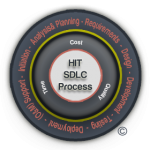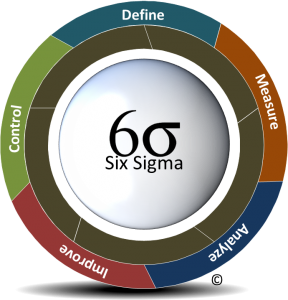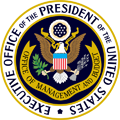 | Our program and project management team members are PMI certified who will place the highest focus on the execution of your project and program needs to achieve success. |
 | Our INCOSE Certified Systems Engineering team members brings a vast amount of experience and knowledge in the area of Systems Engineering, Full SDLC, and the various models/workframes such as the waterfall, Agile, Top-down/Bottom-up, RAD, RUP, etc... Allow us bring optimized solutions to these critical challenges in your organization. |
 | Enterprise Architecture services are provided by our talented TOGAF certified staff that bring the DoDAF and TOGAF frameworks to your projects and practice the standards to their highest potential. |
 | We possess a full complement of SDLC and project life-cycle expertise and fully recognize their relationship to one-another. We have expertise in executing and managing Agile projects and hybrid implementation. |
 | Information Technology Infrastructure Library (ITIL) brings a cohesive array of best practices, drawn from the public and private sectors internationally where its best practices approach provides IT Service Management (ITSM) with significant number of benefits. ITIL categorizes these best practices throughout program, project to system management in the following phases:
Service Strategy, Service Design, Service Transition, Service Operation and Continual Service Improvement. |
 | Capability Maturity Model Integrated (CMMI) - The basic purpose of the Capability Maturity Model (CMM) was to create a development model supported and funded by the U.S. Department of Defense. The "maturity" of an organization refers to the degree of formality and optimization of processes within an organization (existing or lacking). Process optimization ranges from ad hoc practices, to formally defined steps, to managed result metrics, to active optimization of the processes. Every organization and business operates at one of the CMMI levels: Initial, Defined, Repeatable, Managed, or Optimized. Do you know what level your organization is operating at or the level you can achieve simply by changing some building blocks of your business practices and processes? Let us help you ! |
 | Developed by Motorola in 1986, Six Sigma is a set of techniques and tools for process improvement.
Six Sigma seeks to improve the quality of process outputs by identifying and removing the causes of defects (errors) and minimizing variability in manufacturing and business processes. It uses a set of quality management methods, including statistical methods, and creates a special infrastructure of people within the organization ("Champions", "Black Belts", "Green Belts", "Yellow Belts", etc.) who are experts in these methods. Each Six Sigma project carried out within an organization follows a defined sequence of steps and has quantified value targets, for example: reduce process cycle time, reduce pollution, reduce costs, increase customer satisfaction, and increase profits. These are also core to principles of Total Quality Management (TQM) the book "In Search of Excellence".
Method 1: DMAIC or RDMAIC
• Recognize the right problem to work on, thus yielding an RDMAIC methodology
• Define the system, the voice of the customer and their requirements, and the project goals, specifically.
• Measure key aspects of the current process and collect relevant data.
• Analyze the data to investigate and verify cause-and-effect relationships. Determine what the relationships
are, and attempt to ensure that all factors have been considered. Seek out root cause of the defect under
investigation.
• Improve or optimize the current process based upon data analysis using techniques such as design of
experiments, poka yoke or mistake proofing, and standard work to create a new, future state process. Set up
pilot runs to establish process capability.
• Control the future state process to ensure that any deviations from the target are corrected before they result
in defects. Implement control systems such as statistical process control, production boards, visual
workplaces, and continuously monitor the process.
Method 2: DMADV or DFSS
The DMADV project methodology, known as DFSS ("Design For Six Sigma: has 5 phases)
• Define design goals that are consistent with customer demands and the enterprise strategy.
• Measure and identify CTQs (characteristics that are Critical To Quality), product capabilities, production
process capability, and risks.
• Analyze to develop and design alternatives
• Design an improved alternative, best suited per analysis in the previous step
• Verify the design, set up pilot runs, implement the production process and hand it over to the process
owner(s). |
 | Founded in 1901, National Institute of Standards and Technology (NIST) is a non-regulatory federal agency within the U.S. Department of Commerce. Its mission is to promote U.S. innovation and industrial competitiveness by advancing measurement science, standards, and technology in ways that enhance economic security and improve our quality of life.
From the smart electric power grid and electronic health records to atomic clocks, advanced nanomaterials, and computer chips, innumerable products and services rely in some way on technology, measurement, NIST provides the standards which other agencies and businesses adhere to.
We too, when providing solutions to your business, will visit and follow the applicable standards at it relates to your program and projects. |
 | Institute of Electrical and Electronics Engineers’ (IEEE) mission and core purpose according to IEEE’s website is to foster technological innovation and excellence for the benefit of humanity. They envision being essential to the global technical community, to technical professionals everywhere, and be universally recognized for the contributions of technology and of technical professionals in improving global conditions.
As a member of the IEEE community, HIT cultivates the roots of innovative ideas with our staff which promotes intelligent thinking and engineering practical solutions to the challenges our client face on daily basis.
|
 | The Carnegie Mellon Software Engineering Institute (SEI) is a federally funded research and development center headquartered on the campus of Carnegie Mellon University in Pittsburgh, Pennsylvania, United States. The SEI program of work is conducted in several principal areas: management, acquisition, process engineering & management, risk, security, software development, and system design. SEI works closely with industry and academia through research collaborations.
As a member of the SEI community we network with the software engineering community as one of the ways we stay abreast of the latest technologies and solutions. Do you know how and when application or network security is considered in your SDLC or project lifecycle? We know when it is essential for a security specialist's involvement in a program. We don’t leave any stones unturned while others step on it to pass.
|
 | Ever wondered who develops and publishes the international standards? Well, it is the International Organization for Standardization (ISO). ISO International Standards provide practical tools for tackling many of today’s global challenges, from managing global water resources to improving the safety of the food we eat. ISO works in the areas of Sustainable development, Food, Water, Energy Efficiency and Renewable, Health, Cars, Climate Change, and Services. The series or families of standards are listed below.
The product or family of products you use may claims to be or when needs to be a certified ISO product. We can help you ensure that the right product and quality product is available to you and your users.
ISO 9000 - Quality management, ISO 14000 - Environmental management, ISO 3166 - Country codes, ISO 22000 - Food safety management, ISO 26000 - Social responsibility, ISO 50001 - Energy management, ISO 31000 - Risk management, ISO 4217 - Currency codes, ISO 639 - Language codes, ISO 20121 - Sustainable events, ISO 27001 - Information security.
As related to technology ISO 9000 and ISO 27001 are important standards to be adhered to.
|
 | The Office of Management and Budget (OMB) is part of the Executive Office of the President. Located next to the White House in Washington, DC, OMB is a small agency of fewer than 500 professional and administrative staff.
The OMB's predominant purpose is to assist the President in overseeing the preparation of the federal budget and to supervise its administration in Executive Branch agencies. In helping to formulate the President's spending plans, the OMB evaluates the effectiveness of agency programs, policies, and procedures, assesses competing funding demands among agencies, and sets funding priorities. The OMB ensures that agency reports, rules, testimony, and proposed legislation are consistent with the President's Budget and with Administration policies.
In addition, the OMB oversees and coordinates the Administration's procurement, financial management, information, and regulatory policies. In each of these areas, the OMB's role is to help improve administrative management, to develop better performance measures and coordinating mechanisms, and to reduce any unnecessary burdens on the public. The OMB manages other agencies' financials, paperwork, and IT.
We have helped organizations in their enterprise program maturity reporting requirements and adherence and we can do the same for you as related or appropriate. |










